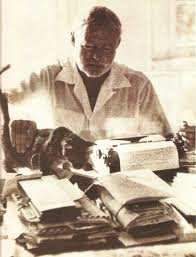27 Oct The Nature of Innovative Thinking
 Mental Exploration
Mental Exploration
The shape of the world changed radically when folks from the eastern and western hemispheres became aware of one another and of their respective geographies. The Age of Exploration (AKA the Age of Discovery) was amazing – or should I say “it is amazing”? While the focus has changed from continents and cultures, to galaxies and nano-scale phenomena, human curiosity is still alive and well.
Some people are more free-thinking than others, and some ideas are better than others. There are even some cultures in which the way people innovate is constrained by cultural mores. Specifically, in cultures where homogeneity and appearances or “saving face” are encouraged in families, innovation is more likely to be collaborative than individual. I want to look briefly at what it takes to innovate, and consider whether it is something we can delegate successfully to smart machines, or if innovative thinking will remain the exclusive property of humans. My intent in today’s post is to talk about some fascinating findings on how humans think in creative or innovative ways. Frame-Shifting and Conceptual Blending – Coulson 2001 – are a couple promising theories that show potential to be implemented in the weighted ontology model I propose for language understanding.
| Understanding Context Cross-Reference |
|---|
| Click on these Links to other posts and glossary/bibliography references |
|
|
|
| Prior Post | Next Post |
| Coefficient of Bureaucratic Drag | Chemicals And Cognitive Performance |
| Definitions | References |
| think frames | Coulson 2001 |
| association munge | Bloomberg 2014 |
| conceptual domain | LiteraryDevices.net |
Frames
 I have spoken of frames and slots in prior posts. Frames are used to describe the constellation of attributes we expect to be associated with an object. Frame shifting, Seana Coulson tells us, is a process of borrowing attributes not normally associated with an object, and inserting them into that unexpected object’s frame. The unexpectedness is interesting to many readers, so some authors, such as Ernest Hemingway, use frame shifting as a literary convention to evoke unexpected imagery. He said “There is nothing to writing. All you do is sit down at a typewriter and bleed.” The reference to effortlessness draws our attention because his work is so complex and captivating – clearly an understatement. The reference to bleeding is fascinating, not only because of the specific wartime settings of some of his best writing, but because we intuitively know that no amount of bleeding will operate a typewriter.
I have spoken of frames and slots in prior posts. Frames are used to describe the constellation of attributes we expect to be associated with an object. Frame shifting, Seana Coulson tells us, is a process of borrowing attributes not normally associated with an object, and inserting them into that unexpected object’s frame. The unexpectedness is interesting to many readers, so some authors, such as Ernest Hemingway, use frame shifting as a literary convention to evoke unexpected imagery. He said “There is nothing to writing. All you do is sit down at a typewriter and bleed.” The reference to effortlessness draws our attention because his work is so complex and captivating – clearly an understatement. The reference to bleeding is fascinating, not only because of the specific wartime settings of some of his best writing, but because we intuitively know that no amount of bleeding will operate a typewriter.
For the action word (object) “redecorate” we may associate a room or building, an existing style, color and set of furnishings, and a replacement style, color and set of furnishings. We may shift our frame to think of “make-overs” normally associated with cosmetics and hair styles. Coulson gives us: “They redecorated the bar with new drunks.” She further explains that “because decorations in a bar are almost ubiquitously inanimate, patrons of a bar are not customarily considered decorations. However, stereotypical knowledge of the behavior of drunks in bars affords a mapping between drunks and decorations” (Coulson 2001 p. 62).
 Conceptual Blending is similar, but instead of borrowing a single attribute, we may take two separate frames and munge them together. For example, for the noun “trash can” we may normally associate its size, capacity, the types of trash it normally contains, how full it is and whether or not is emits odors. These associations are the slots in its frame and could be attributes in an ontology. Frame shifting allows us to compare the mouth of the trash can to a basketball hoop, and blending allows us to invent a game in which we imitate basketball players by throwing balled-up paper into the trash using set shots, lay-ups and free-throws.
Conceptual Blending is similar, but instead of borrowing a single attribute, we may take two separate frames and munge them together. For example, for the noun “trash can” we may normally associate its size, capacity, the types of trash it normally contains, how full it is and whether or not is emits odors. These associations are the slots in its frame and could be attributes in an ontology. Frame shifting allows us to compare the mouth of the trash can to a basketball hoop, and blending allows us to invent a game in which we imitate basketball players by throwing balled-up paper into the trash using set shots, lay-ups and free-throws.
Adjectives
Novel combinations of adjectives and nouns make evocative poetry. The singing Barenaked Ladies use “real” and “cruel” in a very amusing innovation:
“Well, I’d buy you a fur coat, But not a real fur coat, that’s cruel” then “Well, I’d buy you a green dress, But not a real green dress, that’s cruel”
The alternative to a “real” green dress, and the possible implications of “cruel” in this context bend the imagination, and typically bring appreciative laughter. Such is the case with many innovative uses of adjectives: that is, if the listener is a native English speaker. Turning a phrase in one language often doesn’t translate well, and often leaves non-native speakers unimpressed. On the other hand, using unexpected adjectives can stimulate ideas that may not otherwise have popped into your head. Thought provoking (not provocative) word play may catalyze opportunities for creativity.
Crossing Domain Boundaries
 Bleeding at typewriters, Trashketball and cruel fashions are linguistic plays on domains, but some scientific discoveries seriously cross domain boundaries. “Interdisciplinary innovation arises from the positive effects that result when stepping across the social boundaries that we structure knowledge by. Those boundaries include academic disciplines, government departments, companies’ internal functions, companies and sectors, and the boundaries between these domains. In the knowledge economy, it is often the case that the right knowledge to solve a problem is in a different place to the problem itself, so interdisciplinary innovation is an essential tool for the future. There are also many problems today that need more than one kind of knowledge to solve them, so interdisciplinary innovation is also an essential tool for the challenging problems of today” (Blackwell 2009).
Bleeding at typewriters, Trashketball and cruel fashions are linguistic plays on domains, but some scientific discoveries seriously cross domain boundaries. “Interdisciplinary innovation arises from the positive effects that result when stepping across the social boundaries that we structure knowledge by. Those boundaries include academic disciplines, government departments, companies’ internal functions, companies and sectors, and the boundaries between these domains. In the knowledge economy, it is often the case that the right knowledge to solve a problem is in a different place to the problem itself, so interdisciplinary innovation is an essential tool for the future. There are also many problems today that need more than one kind of knowledge to solve them, so interdisciplinary innovation is also an essential tool for the challenging problems of today” (Blackwell 2009).
Metonymy and Synecdoche
Literary devices that can support not only language innovation but entrepreneurial invention include metaphor, metonymy and synecdoche. “Synecdoche refers to a thing by the name of one of its parts. For example, calling a car “a wheel” is a synecdoche. A part of a car i.e. “a wheel” stands for the whole car. In a metonymy, on the other hand, the word we use to describe another thing is closely linked to that particular thing, but is not a part of it. For example, “Crown” which means power or authority is a metonymy” (LiteraryDevices.net). Metaphor is similar, but it involves comparisons of unrelated things to evoke properties or relationships that may be shared. Metahpor is used widely in poetry, but not so much in prose and ordinary speech, where metonymy and synecdoche often find their way in to the vernacular. Again, it is the surprising use of these literary devices that is prone to lead to innovative thinking.
Creativity is Inevitable
Creativity is an important source of change and upheaval. Free-market economies thrive on it. “If the business world weren’t in a constant state of change, then perhaps leaving slow, traditional IT to its own devices would be the low risk option. Well, welcome to the 21st century, folks. The business world is in a perennial state of flux, and the ever-increasing sophistication of technology is only accelerating the velocity and diversity of such change. Transformation is all around us – even in the dusty old data centers filled with ancient legacy monoliths. The fossil record is replete with species that didn’t adapt to change. Don’t be one of them” (Bloomberg 2014). Is there a future in which systems predict ways in which they will need to adapt to changing industry and consumer drivers? That would be nice to have today.
| Click below to look in each Understanding Context section |
|---|
| Intro | Context | 1 | Brains | 2 | Neurons | 3 | Neural Networks |
| 4 | Perception and Cognition | 5 | Fuzzy Logic | 6 | Language and Dialog | 7 | Cybernetic Models |
| 8 | Apps and Processes | 9 | The End of Code | Glossary | Bibliography |








